Apple Announces OS X El Capitan
by Brandon Chester on June 8, 2015 3:45 PM EST
Today at WWDC Apple announced the next version of their OS X operating system. This next release, presumably version 10.11, is named OS X El Capitan. OS X Yosemite came with a comprehensive redesign which brought it in line with the new design principles that Apple introduced with iOS 7. The focus of El Capitan can be found in its name, which is a rock formation within Yosemite National Park. With Yosemite being the radical revamp, El Capitan focuses on improvements to the user experience and to performance.
One of the areas that has seen dramatic improvements in El Capitan is Spotlight Search. In my experience, Spotlight has historically never been very smart. It was only with Yosemite that it gained the ability to search for keywords or phrases inside files. Even then, it was never able to bring up obvious results to certain queries that Siri would be able to do on the iPhone. For example, searching for the current weather would just try to find the phrase "current weather" somewhere on your Mac, which isn't useful at all. In El Capitan Apple is applying the search functionality of Siri to text searches done via spotlight. You can ask for information on the weather, or on the scores from a hockey game. You can also ask for very specific items, such as the query in the image above where Spotlight is used to find a set of Keynote slides about a natural park that were sent by a certain person.
Mission Control sees a number of improvements as well. On the most basic level, there are a few changes to the interface. A blur effect is no longer applied to your wallpaper, and the bar at the top with your virtual desktops doesn't expand if you only have a single desktop at that moment, which gives more space for application windows. Apple has also added the ability to drag windows into the bar at the top to instantly put them into fullscreen mode.
Application multitasking has also been improved. El Capitan has a new feature that essentially performs the same function as Aero Snap on Windows. Two apps or other parts of the interface can be set so they split the screen down the middle. This even works with parts of the OS like Mission Control which you can see in the photo above.
As usual, Apple has included a number of updates to their existing applications. Notes was definitely the app that saw the greatest amount of improvement. You can now embed photos and use rich type with the Notes app, which almost makes it like a very simple version of Pages, as you're no longer limited to just typing in text with the most basic of formatting abilities.
Mail was another application that saw changes. You can now use trackpad gestures in the mailbox view to quickly mark or delete images. This is such an obvious feature, with the iOS version having had these abilities for some time now, and I'm surprised that it took this long to add it to OS X.
Safari also received a couple of new features. You can now slide tabs to the left to pin them, which will keep them persistent even after restarting Safari or your computer. There are also indicators for which tabs are playing sound, which is something other browsers have had for some time now.
Of course, the biggest area of focus in El Capitan is performance. With the release of Yosemite it was clear that Apple needed to focus more on the performance of their OS after adding in visual effects that were taxing on the CPU and GPU. On my Retina MacBook Pro I saw considerable performance regressions compared to Mavericks, and even with OS X 10.10.3 many of those issues still remain.
There are two areas of performance that need to be considered. The first is raw speed, while the second is the frame rate of animations. El Capitan tackles some of the issues with the first aspect, but Apple has definitely been focusing on the second aspect with their announcement that the Metal graphics API is coming to OS X. Both the Core Graphics and Core Animation APIs now run on Metal rather than OpenGL. According to Apple, they've seen up to a 50% in rendering performance with Metal, and this will hopefully translate to improved UI smoothness for users.
The developer beta of OS X El Capitan is available today so developers can test their apps and try out new APIs. Like Yosemite, El Capitan will have a public beta beginning in July, and the final release will come this fall.


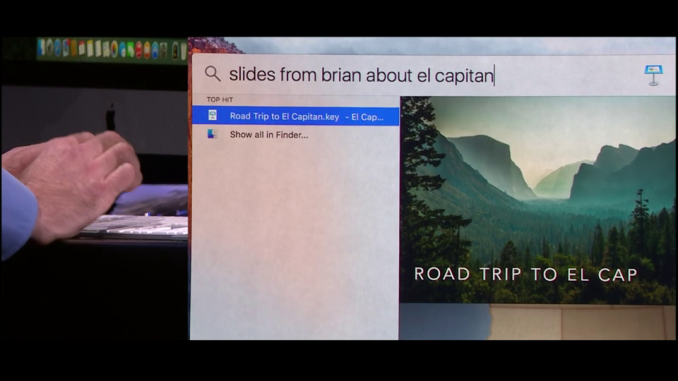
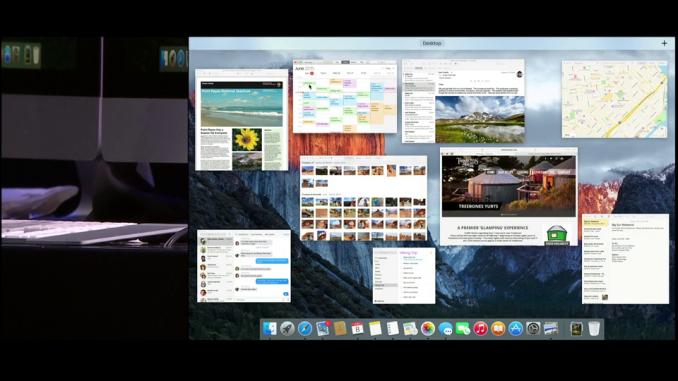
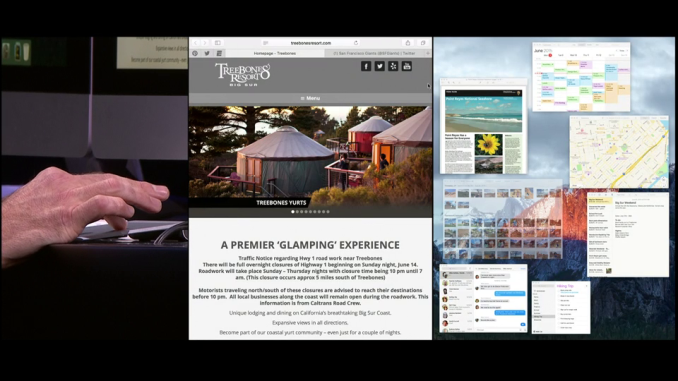
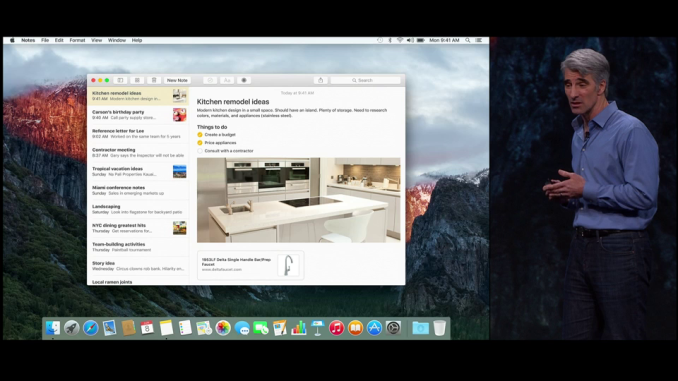
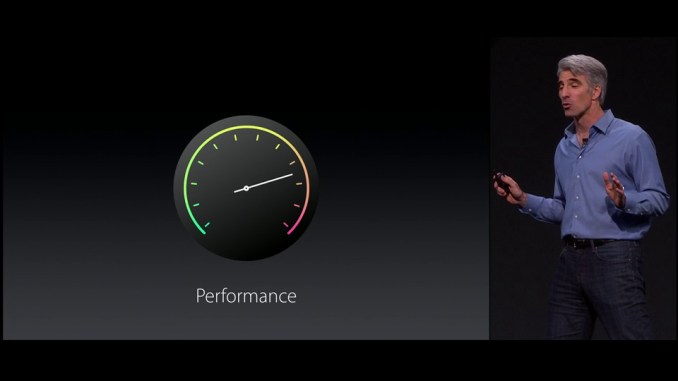








45 Comments
View All Comments
mabellon - Monday, June 8, 2015 - link
Oops I think its supposed to be "6W not the normal 4.5W".Speedfriend - Tuesday, June 9, 2015 - link
There is no way Apple pays $300 for Core M chips. Asus sells core M products at $700. Apple processors are nowhere near as powerful as Core M for CPU intensive tasks, turbo ability or not.psychobriggsy - Tuesday, June 9, 2015 - link
The performance difference isn't that great between an A8X and a Core M.And Apple won't use a tablet oriented chip in such a device anyway. Apple tends to get the performance needs correct in their chip designs, so if they need four/eight ARM cores in their "A10Mac" chip to achieve the performance they need, they will add them. And, of course, having a 5W TDP (with ~10W boost) rather than a 2W TDP will mean they can boost the top clocks of the cores too.
Again, nothing suggests Apple are doing this at the moment, but if they were to do it, they would solve most of the issues by release date.
name99 - Tuesday, June 9, 2015 - link
It depends what you mean by "performance".They have the same IPC, but
- the Broadwell can turbo up to 2.9GHz (for the highest speed model).
- the Broadwell's nominal frequency is 1.3 GHz, the A8X's is 1.5 GHz.
I suspect what this means in reality is that for SUSTAINED code, they are about equal, with Broadwell able to zip ahead for bursts of speed (which is important for responsiveness).
The issue, however, is more what Apple is capable of doing. The question is not "what is the performance of Apple's iOS optimized chip?", it's "what is Apple capable of if they designed a higher power optimized chip?"
It seems plausible that, with 14nm andFinFETs, the A9X could run at 2GHz. There's more scope for compiler improvements in LLVM for ARMv8 than for x86, and there's a steady stream of improvements coming (LTO, PGO, better register allocation, better vectorization, POLLY, etc). One third of last year's 25% A7 to A8 speedbump was compiler, and it seems reasonable to expect a similar 8% or so jump this year and next year before the compiler is maxed out.
It also seems reasonable, even if all Apple do with the A9 is the same sort of minor micro-architectural tweaks as the A8, that they could get another 8% or so from there. So now we've got something that's capable of matching Broadwell at around 2.2 GHz or so --- still not hitting those turboboost numbers, but a lot closer.
Beyond that there are the obvious questions. Apple appears not to have even tried so far for serious circuit optimization stuff --- so far they've just ensured a nice core architecture. Their L2 is slow compared to Intel (and other companies with less resources than Intel), and their L3 is crazy slow compared to competitors. They have not apparently invested any effort in any sort of turbo'ing technology. There's a lot they could do with pre-fetching. etc
The point is not that they have been dumb --- every one of these choices was probably optimal for a phone/tablet SoC. But there is no reason to believe that they are unaware of the consequences of different choices, and they appear to have the skill to pull them off. Meaning that if they had an ECONOMIC/STRATEGIC reason (as opposed to just "wouldn't it be cool?") there seems to no reason to believe they couldn't fab a design at 3GHz, with some turbo'ing, and with all these micro-architectural enhancements setting at the equiv of Intel's 3.3 to 3.5 GHz or so.
My guess is the strategy is more important than the economics. They sell a little under 20 million macs a year. If they save $100 on each CPU, that's $2billion. I guess that's enough to cover costs and break even. They would make Macs less desirable to WinHeads (bad) but would be able to introduce new features on their schedule (good). No more being stuck with Intel's schedule for introducing TB3 or USB3.1 or whatever.
The big problem is at the high end, I think. Unless they're going to sell these cores to someone else, they probably can't break close to even on designing the NoC, the L3 cache features, creating the the masks, etc, all the stuff they'd need to create a Xeon equivalent. They could run split architecture (at least for a while) I guess, but that's a hassle for everyone. Of course as their data center needs grow, that provides a captive market for those Xeon equivalents that's probably a LOT larger than the Mac Pro sales...
psychobriggsy - Tuesday, June 9, 2015 - link
Well, if an A10X chip costs Apple $40 to make, runs at 5W and performs great, then the savings in price over using the Intel chip, times the millions of devices they would ship, is a massive saving, even for a company of Apple's size.Additionally, there is such a thing as emulation, and there are commercial x86 emulators for ARM - you can even get one for the Raspberry Pi. For compatibility with apps that won't get recompiled, this is a viable option (as they will tend to be older). Also, remember most apps spend most of their time in system libraries, so as long as the emulation allows the use of native libraries, performance won't drop too much.
Any current software could be recompiled to have an ARM binary in the bundle. This would be an XCode thing that Apple could enable at any time.
Apple could start with a MacBook Lite type device, before migrating the rest of the ecosystem (for example, they probably won't want to stop using Xeons in the Mac Pro).
I'm not saying that Apple will do it, or will do it this year or next year. I'm just saying that compatibility is not going to stop them doing it.
eanazag - Monday, June 8, 2015 - link
Metal has to already work on an A5 as iPad 2 was an iOS 8 supported device and so was the Iphone 4S. Both used the A5 chip.Anyhow, Metal is a DirectX 12 play. Apple is looking to bring titles/developers from iOS over to Mac easily. With an end hope of promoting gaming on Mac. I see this as a good possibility as they have always leveraged better graphics hardware than PC OEMs. I have spent some time searching the Mac App Store for games and it is sparse. There should definitely be an uptick of games for Mac by this time next year. Apple was already supporting Intel, Nvidia, and AMD graphics on their own, so I don't see this as a stretch for them.
tipoo - Tuesday, June 9, 2015 - link
That's not right. They got iOS8, but no Metal. It requires the A7 GPU onwards.https://developer.apple.com/library/ios/documentat...
CharonPDX - Thursday, June 11, 2015 - link
As for "not all devices can use it" - absolutely. Apple has done this differentiation *PLENTY* of times on the Mac. Quartz Extreme, Quartz 3D, AirDrop... I'm currently running Yosemite on the oldest Mac it can run on. I'm missing out on *PLENTY* of features. Most of them are inconsequential - speed boosting ones, not actual functional features, but AirDrop and Continuity are two that I would like to have. (If I upgrade my WiFi card, I could get them.)ASEdouardD - Monday, June 8, 2015 - link
Regarding performance, raw speed is fine in Yosemite, it's the transparancy that is killing animation performance. It's just stupid to have newer macbook pros not run animations smoothly.Daniel Egger - Monday, June 8, 2015 - link
It's also running sluggishly on older hardware. Compositing performance really sucks in Yosemite and even worse seems to depend on a number of non-obvious factors; even with reduced transparency and just the internal screen and few windows open the performance might slow down to almost a halt and even switching between two terminal windows can take 3s and will only recover after a reboot.